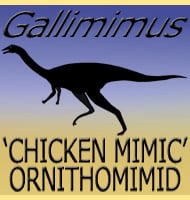Sonorasaurus
In Depth Sonorasaurus may look like an atypical brachiosaurid dinosaur (as in similar to the famous Brachiosaurus), but the genus actually represents the first known example of a brachiosaurid dinosaur in North America during the Cretaceous, specifically around the early/late Cretaceous boundary. This is yet further evidence that counters the now outdated theory that the … Read more
